
The Song dynasty was an imperial dynasty of China that ruled from 960 to 1279. The dynasty was founded by Emperor Taizu of Song, who usurped the throne of the Later Zhou dynasty and went on to conquer the rest of the Ten Kingdoms, ending the Five Dynasties and Ten Kingdoms period. The Song often came into conflict with the contemporaneous Liao, Western Xia and Jin dynasties in northern China. After retreating to southern China following attacks by the Jin dynasty, the Song was eventually conquered by the Mongol-led Yuan dynasty.

The history of Vietnam can be traced back to around 20,000 years ago. The first modern humans to arrive and settle in the area of modern-day Vietnam are known as the Hoabinhians, who can be traced as the ancestors of modern-day Negritos. Archaeological findings from 1965, which are still under research, show the remains of two hominins closely related to the Sinanthropus, dating as far back as the Middle Pleistocene era, roughly half a million years ago.
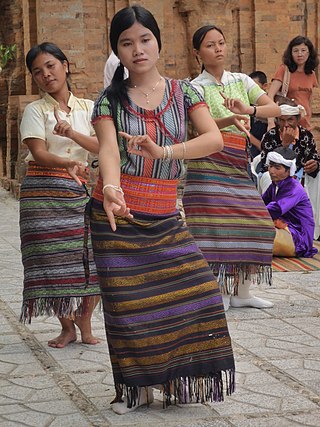
The Chams, or Champa people, are an Austronesian ethnic group in Southeast Asia as well as an indigenous people of central Vietnam. They are the original inhabitants of coastal areas in Vietnam and Cambodia, along the South China Sea, since before the arrival of the Cambodians and Vietnamese, during the expansion of the Khmer Empire and the Vietnamese conquest of Champa.
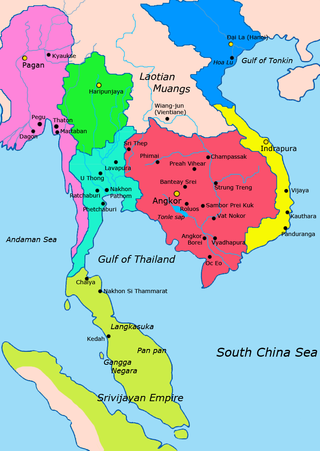
Champa was a collection of independent Cham polities that extended across the coast of what is present-day central and southern Vietnam from approximately the 2nd century CE until 1832. According to earliest historical references found in ancient sources, the first Cham polities were established around the 2nd to 3rd centuries CE, in the wake of Khu Liên's rebellion against the rule of China's Eastern Han dynasty, and lasted until when the final remaining principality of Champa was annexed by Emperor Minh Mạng of the Vietnamese Nguyễn dynasty as part of the expansionist Nam tiến policy. The kingdom was known variously as Nagaracampa, Champa (ꨌꩌꨛꨩ) in modern Cham, and Châmpa (ចាម្ប៉ា) in the Khmer inscriptions, Chiêm Thành in Vietnamese and Zhànchéng in Chinese records, and al-Ṣanf in Middle Eastern Muslim records.
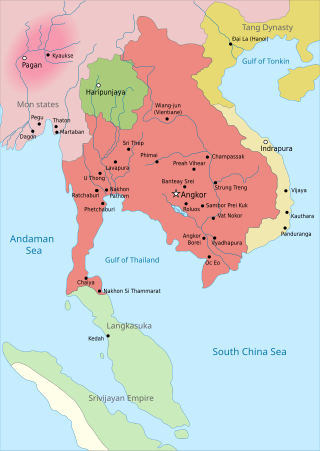
The Khmer Empire was a Hindu-Buddhist empire in Southeast Asia, centered around hydraulic cities in what is now northern Cambodia. Known as Kambuja by its inhabitants, it grew out of the former civilisation of Chenla and lasted from 802 to 1431. Historians call this period of Cambodian history the Angkor period, after the empire's most well-known capital, Angkor. The Khmer Empire ruled or vassalised most of mainland Southeast Asia and stretched as far north as southern China. At its peak, the Empire was larger than the Byzantine Empire, which existed around the same time.

The culture of Vietnam are the customs and traditions of the Kinh people and the other ethnic groups of Vietnam. Vietnam is part of Southeast Asia and the Sinosphere due to the influence of Chinese culture on Vietnamese culture.

Islam in Vietnam is primarily the religion of the Cham people, an Austronesian minority ethnic group; however, roughly one-third of Muslims in Vietnam are of other ethnic groups. There is also a community, which describes itself as of mixed ethnic origins, that practices Islam and is also known as the Cham, or Cham Muslims, around the region of Châu Đốc in the Southwest.
Islam is the most widely practised religion in Southeast Asia, numbering approximately 240 million adherents which translate to about 42% of the entire population, with majorities in Brunei, Indonesia and Malaysia as well parts of Southern Thailand and parts of Mindanao in the Philippines respectively. Significant minorities are located in the other Southeast Asian states. Most Muslims in Southeast Asia are Sunni and follow the Shafi`i school of fiqh, or religious law. It is the official religion in Malaysia and Brunei while it is one of the six official faiths in Indonesia.
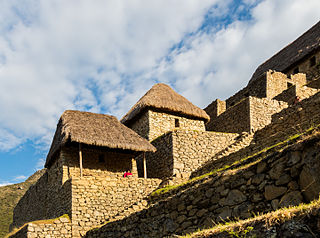
In world history, post-classical history refers to the period from about 500 CE to 1500 CE, roughly corresponding to the European Middle Ages. The period is characterized by the expansion of civilizations geographically and the development of trade networks between civilizations. This period is also called the medieval era, post-antiquity era, post-ancient era, pre-modernity era, or pre-modern era.

Four major military campaigns were launched by the Mongol Empire, and later the Yuan dynasty, against the kingdom of Đại Việt ruled by the Trần dynasty and the smaller kingdom of Champa in 1258, 1282–1284, 1285, and 1287–88. The campaigns are treated by a number of scholars as a success due to the establishment of tributary relations with Đại Việt despite the Mongols suffering major military defeats. In contrast, modern Vietnamese historiography regards the war as a major victory against the foreign invaders.

Đại Việt, often known as Annam, was a monarchy in eastern Mainland Southeast Asia from the 10th century AD to the early 19th century, centered around the region of present-day Hanoi, Northern Vietnam. Its early name, Đại Cồ Việt, was established in 968 by Vietnamese ruler Đinh Bộ Lĩnh after he ended the Anarchy of the 12 Warlords, until the beginning of the reign of Lý Thánh Tông, the third emperor of the Lý dynasty. Đại Việt lasted until the reign of Gia Long, the first emperor of the Nguyễn dynasty, when the name was changed to Việt Nam.

The economy of East Asia comprises 1.6 billion people living in six different countries and regions. The region includes several of the world's largest and most prosperous economies: Taiwan, Japan, South Korea, China, Hong Kong, and Macau. It is home to some of the most economically dynamic places in the world, being the site of some of the world's most extended modern economic booms, including the Taiwan miracle (1950–present) in Taiwan, Miracle on the Han River (1974–present) in South Korea, Japanese economic miracle (1950–1990) and the Chinese economic miracle (1983–2010) in China.
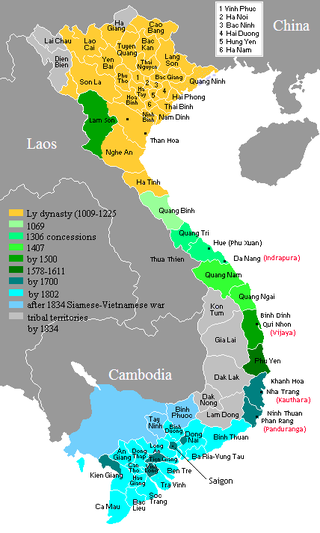
Nam tiến is a historiographical concept that describes the historic southward expansion of the territory of Vietnamese dynasties' dominions of Đại Việt from the 11th to the 19th centuries. The concept of Nam tiến has differing interpretations, with some equating it to Viet colonialism of the south and to a series of wars and conflicts between several Vietnamese kingdoms and Champa Kingdoms, which resulted in the annexation and Vietnamization of the former Cham states as well as indigenous territories.

Indrapura was the capital city of the kingdom of Champa from 875 AD until 982, or until 12th century AD. It was built and ruled under the reign of Buddhist king Indravarman II and some of his successors belonging to the Bhrgu dynasty in Đồng Dương. The word Indrapura means "City of Indra" in Sanskrit, Indra being the Hindu God of Storm and War, and King of the Gods in the Rig Veda.

Emperor Zhenzong of Song, personal name Zhao Heng, was the third emperor of the Song dynasty of China. He reigned from 997 to his death in 1022. His personal name was originally Zhao Dechang, but was changed to Zhao Yuanxiu in 983, Zhao Yuankan in 986, and finally Zhao Heng in 995. He was the third son of his predecessor, Emperor Taizong, and was succeeded by his sixth son, Emperor Renzong at the end of his reign. From 1020 he was seriously ill, but retained power despite this. Because of his illness, day-to-day rule of China was often placed in the hands of his third wife, Empress Liu.
The history of Champa begins in prehistory with the migration of the ancestors of the Cham people to mainland Southeast Asia and the founding of their Indianized maritime kingdom based in what is now central Vietnam in the early centuries AD, and ends when the final vestiges of the kingdom were annexed and absorbed by Vietnam in 1832.

Southeast Asia was in the Indian sphere of cultural influence from 290 BCE to the 15th century CE, when Hindu-Buddhist influences were incorporated into local political systems. Kingdoms in the southeast coast of the Indian subcontinent had established trade, cultural and political relations with Southeast Asian kingdoms in Burma, Bhutan, Thailand, the Sunda Islands, Malay Peninsula, Philippines, Cambodia, Laos, and Champa. This led to the Indianisation and Sanskritisation of Southeast Asia within the Indosphere, Southeast Asian polities were the Indianised Hindu-Buddhist Mandala.
The Cham-Vietnamese Wars were a series of wars and conflicts between various Vietnamese dynasties and of Champa that led to a total annexation of Champa by the Vietnamese, starting with the 10th-century wars between the two states, and ended with recent 20th-century ethnic conflicts. These wars are considered principal parts of the Vietnamese's supposed Nam tiến theory.
Fast ripening rice is a type of rice that ripens faster than other strains. It is also able to withstand abiotic factors, such as temperatures, floods, droughts, and salinity. Fast-ripening rice was discovered in China during the Song dynasty.
Harivarman II, was king of Champa from 988 to 997.















